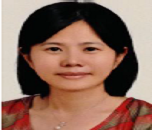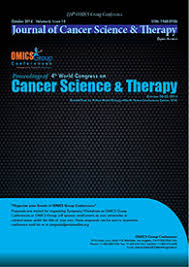Theme: Interpreting the Cancer Genome: Understanding Cancer Evolution and Evasion
Cancer Genomics 2019
We heartily welcome all the participants throughout the globe to participate in the conference titled 26th Cancer Genomics Congress: New Era for Cancer Prevention which is scheduled to commence on July 15-16, 2019, Abu Dhabi, UAE. This event would be a great opportunity to gather knowledge as well as experience in the field of Cancer Prevention and Control.
The Conference will provide a wonderful forum for you to refresh your knowledge base and explore the innovations in Chemotherapy, Gynecologic Cancer Prevention and Control, Clinical Oncology, Cancer Immunotherapy, Breast cancer etc.
The Conference will strive to offer plenty of networking opportunities, providing you with the opportunity to meet and interact with the leading scientists and researchers, speakers, to help enhance professional skills and meet the personal educational goal as well as friends and colleagues, different sponsors and exhibitors.
Cancer Genomics 2019 invites Speakers, Researchers, Exhibitors, and Sponsors from everywhere throughout the world to join the Cancer Genomics 2019 which will be held July 15-16, 2019 in Abu Dhabi, UAE.
Cancer Genomics 2019 is an International Conference which unites researchers, youthful analysts, students and making the Congress an ideal stage to share encounters, pick up and assess rising advancements in Cancer Prevention, Cancer Research, and Therapy over the globe.
Cancer Research widely goes from malignancy the study of sub-atomic level research to the execution of clinical preliminaries to assess and analyze uses of the different tumor medications and disease transmission. Numerous treatment choices for malignancy exist. The essential ones incorporate medical procedure, radiation treatment, chemotherapy, directed treatment, palliative care, hormonal treatment, and consolidated treatment modalities, and immunotherapy, for example, chemo-radiotherapy.
Motives to attend:
-
Keynote presentation along with interactions to galvanize the scientific community.
-
A wide track of exhibitors to showcase the new and emerging technologies.
-
Young Scientist/ Investigators Award geared towards best budding young research.
-
Links to political marketing resources in order to expand your business and research network.
-
Triumph of Awards, Certificates recognizes your commitment to your profession to encourage the nascent research.
-
Workshop and symposiums to reach the largest assemblage of participants from the Oncology community.
Why Should Attend??
-
The arranging group assembles eminent speakers covering the most recent advances in the field, fusing differing qualities in each sense. We likewise incorporate talks on most recent methodologies for concentrating these biological inquiries.
-
The conference focuses on the wider aspect of the scientific contribution to showcase the new scientific and technical advances in comparison to the ancient theories. Your perspective and our visualization together will set a platform for the exchange of ideas towards contribution to advanced innovation.
-
We encourage multidisciplinary approach as well. Not only speaker presentations but also workshops, exhibition, and networking opportunities are available. A Unique Opportunity for Advertisers and Sponsors at this International event.
Track 1: Cancer Genomics
Cancer is a group of diseases caused by changes in DNA that alter cell behaviour, causing uncontrollable growth and malignancy. Genomics is the study of the sequence of these letters in your DNA and how each string of letters passes information to help each cell in your body work properly. Cancer genomics aims to understand the genetic basis of tumour cell proliferation and the evolution of the cancer genome under mutation and selection by the body environment, the immune system and therapeutic interventions.
Track 2: Cancer Epigenomics and Metagenomics
Cancer epigenomic research is driven by the advancement of novel innovations and the usage of model living beings running from yeasts to plants to vertebrates. For quite a long time, the search for malignant growth qualities has concentrated on hereditary defects that were utilized as labels for identification of these qualities. With the acknowledgment that epigenetic adjustments, in particular DNA methylation events, are engaged with transcriptional changes in both tumor suppressor genes and oncogenes, methods have been created that help the identification of novel malignancy genes modified by DNA methylation alone or in mix with hereditary events. Metagenomics is another horizon in cancer research. Metagenomics has widened the extent of focusing on organisms in charge of inciting different kinds of diseases. About 16.1% of malignant growths are related with microbial disease. Metagenomics is an equitable method for recognizing and concentrate micro-organisms inside their environment.
Track 3: Cancer Immunogenomics
Cancer immunogenomics initially was encircled by research supporting the speculation that cancer mutations produced novel peptides seen as "non-self" by the immune system. The scan for these "neoantigens" has been encouraged by the mixture of new sequencing innovations, specific computational examinations, and HLA binding forecasts that assess physical changes in a cancer genome and decipher their capacity to create a resistant stimulatory peptide. The subsequent data can portray a tumor's neoantigen stack, its unit of penetrating resistant cell types, the T or B cell receptor collection, and direct the structure of a customized therapeutic.
Track 4: Hereditary Cancer Syndromes
Mutations for hereditary cancer syndromes are at high hazard for the advancement of tumors at an early age and in addition the synchronous or metachronous improvement of numerous tumors of the relating tumor spectrum. The hereditary reasons for some inherited disease disorders have just been distinguished. About 5% of all diseases are a part of an inherited malignant growth disorder. Clinical criteria are as of now accessible as per which numerous innate cancer syndromes can be analyzed or suspected and which indicate the way further molecular genetic analysis. A doctor can easily decide if these criteria are met by coordinated addressing about the patient's personal and family medicinal history. The recognizable proof of the causative germ line change in the family permits affirmation of the conclusion in the influenced individual and opens up the alternative of prescient testing in healthy relatives.
Track 5: Genomics of Adult and Pediatric Cancers
Identification of genomic modifications has given the perfect element to infer new procedures for molecular based precision medicine of adult and pediatric cancers including risk evaluation, non-invasive detection, molecular diagnosis and customized treatment. In addition, it is presently obvious that the spectra of genomic-based changes and systems in pediatric malignancies are not quite the same as those dominatingly happening in adult cancers. Adult Cancers on average show generously higher mutational weights compared with the childhood tumors. Collecting proof likewise recommends that the kind of genomic adjustments often experienced in adult cancer is not quite the same as those saw in pediatric malignancies.
Track 6: Systems Biology and Drivers of Cancer
Cancer systems biology perceives that numerous individual disciplines and data types can be helpfully conveyed to hold up under, alone or in combination, to methodically think about malignant growth. The assorted variety of communications among cancer system biologists, who originate from fields, for example, cancer biology, organic chemistry, bioinformatics, engineering, mathematics, material science, and software engineering, can prompt novel ways to deal with the basic difficulties inside the field of malignancy explore.
Cancer systems biology represents the application of systems biology approaches to deal with the investigation of how the intracellular networks of typical cells are disturbed during carcinogenesis to create viable predictive models that can help researchers and clinicians in the approvals of new treatments and medications. These annoyances are caused by the huge and progressing genomic and epigenetic instability in tumors adjusting the elements of wide range of molecules and systems in a cell and further entangled by the changes in the interactions with the local environment and also the individual as a whole through the tumorigenic process itself. Cancer systems biology approaches are therefore dependent on the utilization of computational and numerical techniques to decipher the multifaceted nature in cancer heterogeneity.
Track 7: Structural Genomics and Cancer
Structural genomics is a field of genomics that includes the portrayal of genome structures. This knowledge can be helpful in the act of controlling the genes and DNA portions of a species. Basic genomics depicts the 3-dimensional structure of every last protein that might be encoded by a genome – when particularly dissecting proteins; this is more commonly referred to as structural proteomics. The examination is expected to ponder the structure of the whole genome, by using both experimental and computational methods. While conventional structural prediction centers on the structure of a specific protein being referred to, structural genomics considers a bigger scale by expecting to decide the structure of each constituent protein encoded by a genome.
Track 8: Etiology-Specific Genomic Alterations
Numerous genetic and epigenetic events reveal tumor progression and define the characteristics of tumors. Advances in high-throughput technologies, similar to gene expression profiling, next generation sequencing, proteomics, and metabolomics, have empowered detailed molecular characterization of different tumors. The coordination and investigations of the high-throughput information have unwound numerous novel molecular variations and network alterations in tumors. These molecular changes incorporate different malignant growth driving transformations, gene fusions, amplification, deletion, and post-translational modifications, among others. A large number of these genomic events are being utilized in cancer diagnosis, though others are remedially focused with small-molecule inhibitors. Numerous genes/catalysts that play a role in DNA and histone modifications are additionally modified in different cancers, changing the epigenomic landscape amid malignant growth initiation and progression. Aside from protein-coding genes, studies are revealing the basic administrative roles played by noncoding RNAs and noncoding regions of the genome during malignancy progression. A considerable lot of these genomic and epigenetic events tandem to drive tumor improvement and metastasis. Simultaneous advances in genome-regulating innovations, similar to gene silencing and genome editing, are providing capacity to comprehend in detail the procedure of malignancy initiation, movement, and motioning and additionally opening up roads for therapeutic targeting.
Track 9: Cancer Biomarkers
Biomarkers are molecules that indicate traditional or abnormal method taking place in your body and should be an indication of associate underlying condition or sickness. Various kinds of molecules, like DNA (genes), proteins or hormones, will function as biomarkers, since all of them indicate one thing regarding your health. Biomarkers are also created by the cancer tissue itself or by different cells within the body in response to cancer. They can be found within the blood, stool, urine, tumour tissue, or different tissues or bodily fluids. Notably, biomarkers are not limited to cancer. There are biomarkers for heart condition, multiple sclerosis, and plenty of different diseases.
Track 10: Genome-Based Cancer Typing
Individuals that inherit genomic mutation from their parents are at a greater risk of certain types of cancers. Familial cancer syndromes are the group of cancers where patients inherit genomes that do not function properly, increasing the risk of developing cancer.
Approximately one hundred familial cancer syndromes are known and this range is growing. The genes identified as increasing the risk of cancer are usually autosomal dominant (only one of the pair of chromosomes has to have the mutation in order for it to be expressed) though they'll even be chromosome recessive (both chromosomes should have the mutation for it to be expressed). The identification of those genes has improved designation and helped determine new cancer treatments.
The growing use of biological therapies that have an effect on cellular signaling pathways has revolutionized the treatment of cancer, a trend which will continue as treatment ways may be individualized to people once genomic typing of their cancer is known.
Track 11: Genotyping Technologies
Genotyping technologies give a robust toolset for examining the widest vary of genetic variation. Human genetic variation is gift in many alternative forms within the order, starting from giant, structural, and body changes to single ester polymorphisms (SNPs). There exists a broad vary of merchandise for analysis of genetic variation and genomic identification. Traditional strategies embody in place coupling, SNP genotyping, AFLP and microsatellite analysis; period PCR-based strategies mistreatment TaqMan Assays. Whereas additional advanced genomic identification techniques still develop, like array comparative genomic coupling. Genotyping may be a key tool within the analysis of factor variants related to sickness. Genotyping technologies have brought understanding to the means and consequences of the unbelievable quantity of variation in genomic polymer and its transcription merchandise.
Track 12: Cancer Diagnostics and Treatment
The earlier cancer is diagnosed and treated, the higher the possibility of its being cured. Some types of cancer such as those of the skin, breast, mouth, testicles, prostate, and rectum may be detected by routine self-exam or other screening measures before the symptoms become serious. Most cases of cancer area unit detected and diagnosed once a tumour is felt or once different symptoms develop. In a few cases, cancer is diagnosed incidentally as a result of evaluating or treating different medical conditions. Cancer diagnosing begins with a radical physical communication and a whole anamnesis. Laboratory studies of blood, urine, and stool will sight abnormalities which will indicate cancer. When a tumour is suspected, imaging tests like X-rays, computerized tomography (CT), resonance imaging (MRI), ultrasound, and fiber-optic examination examinations facilitate doctors verify the cancer's location and size. To confirm the diagnosing of most cancers, a diagnostic test must be performed within which a tissue sample is aloof from the suspected tumour and studied below a magnifier to check for cancer cells.
Track 13: Interrogating Cancer Genes with NGS-Based Approaches
Next-generation sequencing (NGS) technologies and knowledge have revolutionized cancer analysis and are increasingly being deployed to guide clinicians in treatment decision-making. NGS technologies have allowed taking an “omics” approach to cancer in order to reveal genomic, transcriptomic, and epigenomic landscapes of individual malignancies. Integrative multi-platform analyses are more and more utilized in large-scale projects that aim to completely characterize individual tumours still as general cancer sorts and subtypes. NGS technologies especially have contributed to “omics” approaches in cancer analysis, allowing large-scale integrative analyses that take into account many neoplasm samples. These types of studies have provided us with an unprecedented wealth of information, providing the background knowledge needed to make small-scale studies informative and relevant. Cancer analysis and care are presently poised to expertise vital progress catalyzed by accessible sequencing technologies which will profit each clinical and research-based effort.
Track 14: Genetic Risk Factors and Potential Therapeutic Targets
Cancer risk factors include exposure to chemicals or other substances, as well as certain behaviours. They additionally embrace things folks cannot management, like age and family history. A family history of certain cancers is often a symptom of a potential heritable cancer syndrome. Most cancer risk (and protective) factors are initially known in medicine studies. Cancer cells are rapidly evolving due to their unstable genome, which contributes to the development of new cancer clones with different gene expression profile (GEP). Manipulating the expression of the genes vital for the progression of the disease is important to beat its heterogeneousness. However, targeting overexpressed genes, retrieved from GEP analysis, would be economical for a particular quite a malignancy.
Track 15: Chemotherapy
Chemotherapy is a widely used treatment for cancer. The term chemotherapy refers to the medications that prevent cancer cells from dividing and growing. It does this by killing the dividing cells. A wide vary of medication is employed to realize these goals. The effectiveness depends to some extent on the stage of the cancer being treated. Adverse effects are often severe, and patients may have to discuss with their physician what to expect. The benefits of chemotherapy sometimes outweigh the danger of adverse effects.
Track 16: Cancer Immunotherapy
Cancer Immunotherapy is the artificial stimulation of the system to treat cancer, up on the system's aptitude to fight cancer. It is an application of the basic analysis of cancer immunology and a growing subspecialty of cancer studies. It exploits the actual fact that cancer cells typically have molecules on their surface that can be detected by the system, called tumor antigens; they are typically proteins or other macromolecules (e.g. carbohydrates). Immunotherapies are often categorised as active, passive or hybrid (active and passive). Active therapy directs the system to attack growth cells by targeting growth antigens. Passive immunotherapies enhance existing anti-tumor responses and embody the utilization of organism antibodies, lymphocytes and cytokines.
Track 17: Anti-Cancer Drugs
Anti-cancer drugs are referred to as anti-neoplastic agents or chemotherapy agents. They impact quickly dividing cancer cells and destroy them. They can be used alone as single-drug therapy or several at once as combination therapy. Various kinds of anti-cancer drugs are alkylating agents, antimetabolites, anti-microtubule agents, topoisomerase inhibitors, cytotoxic agents. They have severe adverse effects like hair loss, nausea and innate reflex, anemia etc.
Track 18: Overcoming Cancer Drug Resistance
Resistance to targeted treatment in cancer is really a moving target; there are opportunities to beat the resistance that develops. Though additional study is required, researchers believe understanding and predicting neoplasm resistance could translate into extra treatment choices within the clinical setting.
Treatment resistance that develops as cancer cells evolve is one of the most important limitations of targeted cancer therapies nowadays. During this progression, cancer cells not solely amendment their response to the drug being employed to treat the cancer, however additionally to several alternative medicine. In some cases, they become vulnerable to another drug, known as collateral sensitivity. In alternative cases, two medicines are at the same time resisted, cited as cross-resistance.
Track 19: Advances of Precision Medicine
Precision medicine is a term that describes personalized treatment that encompasses the employment of latest medicine and therapeutics, targeted to the requirements of a patient supported his/her own genetic, biomarker, phenotypic, or psychosocial characteristics. In particular, advances such as cell sorting, epigenetics, proteomics, metabolomics, and more are converging with informatics and other technologies in a manner that is rapidly expanding the scope of this field. Many current technologies are quickly enhancing the field of precision medicine. Recombinant biologic agents can now be used as replacement therapies, such as in the treatment of haemophilia, and electronic health records have created a rich and accessible database of clinical info which will be used for analysis and for clinical care guideline creation. Gene therapy, genetics, and next-generation deoxyribonucleic acid sequencing ways are maybe having the best effect; this can still advance with decreases in prices.
Track 20: Breast & Gynaecological Oncology
Breast cancer is a cancer that develops from breast tissue. Signs of breast cancer could embrace a lump within the breast, a modification in breast shape, dimpling of the skin, and fluid coming from the nipple, a new inverted nipple, or a red or scaly patch of skin. In those with distant unfold of the illness, there is also bone pain, swollen lymph nodes, shortness of breath, or yellow skin.
Gynecologic oncology may be a specialised field of medication that focuses on cancers of the feminine genital system, together with ovarian cancer, female internal reproductive organ cancer, duct cancer, cervical cancer, and female genital organ cancer. As specialists, they need in depth coaching within the diagnosing and treatment of those cancers.
Track 21: Radiation Oncology & Intervention Radiology
Radiation oncology may be a medical speciality that involves the controlled use of radiation to treat cancer either for cure, or to decrease pain and different symptoms caused by cancer. Radiation therapy may be a part of treatment in around four-hundredth of all patients cured of cancer. Radiation therapy are often applied safely to a large vary of cancers, and should be used alone or in conjunction with surgery, therapy and different treatments. It is sometimes fully non-invasive, and accessed through out-patient clinics. Radiation therapy may be extremely value effective cancer treatment.
Interventional Radiology (IR) refers to a range of techniques which rely on the use radiological image guidance (X-ray fluoroscopy, ultrasound, computed tomography [CT] or magnetic resonance imaging [MRI]) to precisely target therapy. Most IR treatments are minimally invasive alternatives to open and laparoscopic (keyhole) surgery. As several IR procedures begin with passing a needle through the skin to the target it's generally referred to as puncture surgery
Track 22: Pediatric Oncology
Pediatric oncology focuses on the analysis and treatment of cancers affecting youngsters and young adults. Common childhood cancers embody cancer; neuroblastoma, brain cancers, lymphomas, Wilms’ tumour, bone cancers, cell tumors, rhabdomyosarcoma, and retinoblastoma, the kinds of cancers that develop in children are usually totally different from cancers that develop in adults. Pediatric oncologists focus on treating infants, children, young adults and teenagers having cancer. Childhood cancers can develop because the results of DNA changes in cells that occur early in life, even before birth. Cancers that occur in youngsters are very rarely associated with any style of environmental or lifestyle issue. The pediatric oncology Branch is dedicated to enhancing results developed to extend the outcomes for the youngsters with tumour inclination syndromes, and in finding treatment of malady in youngsters
Track 23: Head and Neck Cancers
Cancers that are known jointly as head and neck cancers sometimes begin in the squamous cells that line the moist, tissue layer surfaces within the top and neck (for example, within the mouth, the nose, and therefore the throat). These epithelial cell cancers are usually remarked as epithelial cell carcinomas of the head and neck. Head and Neck Cancers also can begin within the secretion glands; however duct gland cancers are comparatively uncommon. Secretion glands contain many various sorts of cells which will become cancerous; therefore there are many various sorts of duct gland cancer.
Track 24: Organ Specific Cancers
Organ Specific Cancer is usually named based on the location of the Cancer cell in the body organ. There are more than 100 types of Cancer and it may occur anywhere in the human body. Breast Cancer is most common in Women, and Prostate cancer is common in Men. Lung cancer and colorectal cancer occurs commonly in both men and women. Cancer also defined by the type of the cell formed them, like epithelial or squamous cell. There are different types of Cancers based on location of cancer in the body organ. These types of Malignancies come under the category of Organ Specific Cancer.
Track 25: Endocrine and Neuroendocrine Tumours
An endocrine tumor is a mass that begins in the parts of the body that produce and release hormones. Because an endocrine tumor develops from cells that produce hormones, the tumor can also produce hormones. This can cause serious illness.
A neuroendocrine tumor begins in the hormone-producing cells of the body’s neuroendocrine system, which is made up of cells that are a combination of hormone-producing endocrine cells and nerve cells. Neuroendocrine cells are found throughout the body in organs such as the lungs and gastrointestinal tract, including the stomach and intestines. Neuroendocrine cells perform specific functions, such as regulating air and blood flow through the lungs and controlling how quickly food moves through the gastrointestinal tract.
Track 26: Genomics Technologies, Concepts and Resources
Over the past 20-30 years, genomics technology evolutions have drastically transformed cancer researches. Powerful genomics platforms and tools have enabled whole-genome gene expression analysis, mutation analysis of millions of genetic markers in hundreds and thousands individuals, and ultimately the complete cancer genome sequencing in large clinical cohorts
Track 27: Challenges & Ethics of Genomic Research
Genomic research carries great promise, however many ethical problems should be thought of whenever such testing is performed. There are moral concerns, as well as problems encompassing consent and also the uncertainty of the results of genomic testing; the challenge of incidental findings; and potential inequities in access to and benefit from such testing. Genomic testing is probably going to rework the follow of each benign and malignant haematology, however clinicians should rigorously think about these moral problems so as to form the foremost of this exciting and evolving technology.
Scope and Importance:
The current utilization of genomic strategies has been extended to investigate the molecular premise of clinical phenotypes. This methodology could enable scientists to recognize hereditary changes that may recognize aggressive cancers from inactive ones, for instance. Similar methodologies could be utilized to study about the molecular basis of response to a given treatment, and also mechanism of resistance to treatment. The abundance of information rising up out of cancer genome considers progressively will be coordinated with patients' medical histories and clinical information. These coordinated outcomes could be utilized to grow more custom fitted ways to deal with cancer diagnosis and treatment, and in addition to enhance strategies for anticipating cancer hazard, prognosis, and reaction to treatment. Genomic tools will likewise be fundamental for breaking down outcomes from precision medicine clinical trials.
Why to Attend:
Abu Dhabi, the biggest of the seven emirates, holds aggregate turned out saves about 97. 8 billion barrels for oil Furthermore ranks Likewise the 6th most amazing stores holder comprehensively. Its generation stands in 3.1 million bopd, sustaining Abu Dhabi’s status as the second greatest producer in OPEC. In 2014, the emirate exported 730 million barrels about crude, worth USD 84.3 billion, will japan (31.8%), the Netherlands (25.4%) Furthermore France (11%). Despite tumbling oil prices, Abu Dhabi’s non-oil trade expanded in the in the first place half about 2016 will USD 22.96 billion.
Abu Dhabi will be out and about on scope 3.5 million bopd toward those end from claiming 2018 also to maintain that level for 25 years. The powerhouse and custodian of the local oil and gas industry – Abu Dhabi national oil organization (ADNOC) will accomplish the target through an expansion of the seaward handling during Umm Shaif What's more both those upper and lower Zakum oilfields from their current generation about 650,000 bopd on 1 million bopd. Through its subsidiaries Abu Dhabi marine operating agency (ADMA-OPCO, a joint wander the middle of ADNOC, BP, downright What's more JODCO) Furthermore Zakum advancement particular organization (ZADCO, a joint wander the middle of ADNOC, Exxonmobil Also JODCO), ADNOC will contribute USD 25 billion between 2015 Also 2020.
Target Audience:
- Oncologists
- Cancer research institutes
- Cancer Researchers
- Genomic Researchers
- Chemotherapists
- Haematologists
- Health Professionals
- Medical Colleges
- Pathologists
- Pharmacologists
- Radiologists
- Biotechnologists
- Business Entrepreneurs
- Industry Professionals
- Students and Delegates

Market Research:
Genomics in cancer market is required to achieve USD 9.22 billion by 2022. Expanding commonness of malignancy combined with appropriation of next generation sequencing for the diagnosis and treatment is required to fuel the market with future development opportunities. Expanding rates of cancer triggers the interest for financially effective and precise diagnostics in coming years. Genome sequencing ruled the general market in terms of income share at over 24.1% in 2014, inferable from related advantages, for example, exact conclusion and powerful outcomes. For instance, cancer whole genome sequencing helps in disclosure of novel disease related variations, for example, single nucleotide variants (SNVs), basic variations, and duplicate number changes. It additionally helps in contrasting ordinary and tumor DNA.
Furthermore, expanding interest for customized prescriptions in molecular characterization of malignant growth to recognize therapeutic targets is the factor ascribing towards the market development. Likewise, factors, for example, cost decrease in genome sequencing, developing social insurance consumption levels and improvement of compelling diagnostics and restorative methods for cancer are in charge of the potential development of genomics in cancer care.
List of Hospitals and Research Centers:
Worldwide
- Epworth Radiation Oncology
- Georgetown Lombardi Comprehensive Cancer Center
- James Cancer Hospital & Solove Research Institute
- MacArthur Cancer Service
- Oceania Oncology
- Oslo Comprehensive Cancer Centre
- Peter Maccallum Health Centre
- Seattle Cancer Care Alliance
- UNC Lineberger Comprehensive Cancer Center
- Vall D’Hebron Institute of Oncology
Middle East
- King Fahad National Center for Children’s Cancer Care and Research
- Kuwait Cancer Center
- Sheba Medical Center
- Sheikh Khalifa Speciality Hospital
- Special Neolif Medical Center
Abu Dhabi
- Gulf International Cancer Center
- Burjeel Hospital
- Al Noor Hospital
- Shaikh Khalifa Medical City (SEHA)
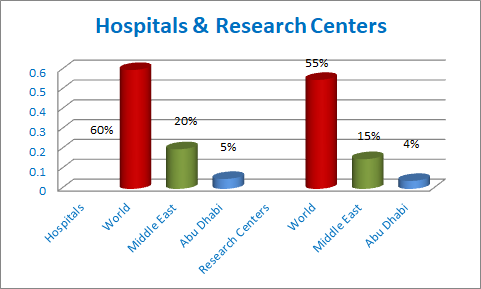
Major Association and Societies:
Worldwide
- American Cancer Society
- American Society of Clinical Oncology
- International Agency for Research on Cancer
- International Assocition for the Study of Lung Cancer
- North American Association of Central Cancer Registries
- Prevent Cancer Foundation
- Susan G. Komen for the Cure
- Union for International Cancer Control
- World Cancer Research Fund International
MiddleEast
- Israel Cancer Association
- Reza Radiotherapy and Oncology Center
- Turkish Association for Cancer Research and Control
Abu Dhabi
- Cancer Society of Finland
- Finnish Cancer Registry
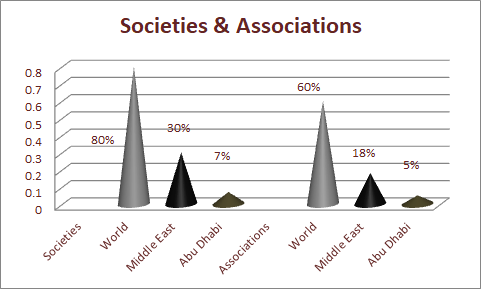
List of Universities:
Worldwide
- Duke University
- John Hopkins University
- Stanford University
- University of Helsinki
- University of Maryland
- University of Manchester
- University of Nottingham
- Washington University in St. Louis
MiddleEast
- Bilkent University
- Hebrew University of Jerusalem
- Istanbul Sehir University
- Tehran University of Medical Sciences
- University of Wasit
Abu Dhabi
- University of Helsinki
- Arcada University of Applied Sciences
- Academic Medical Center Helsinki
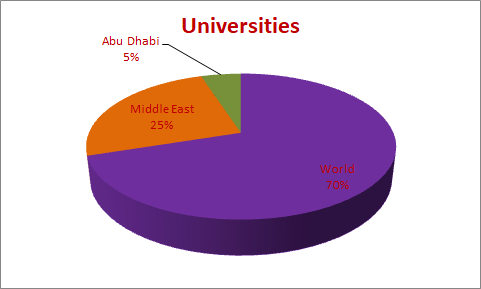
Projections: Growth by 5-10 yrs
Cancer death rates have declined 22 percent since the mid-1990s, on account of better medicines and prior discovery, as indicated by the American Cancer Society. With this new period still in its earliest stages, the cancer care network has high trusts in how the disclosures ahead may change the scene of treatment and survivorship. Somewhere in the range of 2006 and 2014, the U.S. government contributed $375 million to unravel tumor DNA—the formula of life. Analysts have concentrated on perusing the protein-coding qualities of twelve distinctive tumor types, including bosom, ovarian, kidney, colon, lung, head and neck and brain. Presently, the race is on to comprehend that data, and also other information pouring in, and make an interpretation of those revelations into new medications and counteractive action endeavors.
Related Conferences: Cancer Genomics Conferences | Oncology Congress | Genome Sequencing Events | Cancer Genomic Meeting 2019
- 27th World Oncologists Annual Conference on Medical Oncology, Radiation Oncology & Surgical Oncology, December 07-08, 2018, Chicago, Illinois, USA
- 27th Annual Congress on Cancer Science and Targeted Therapies, February 20-21, 2019, San Francisco, USA
- Women Oncology Conference 2019, July 19-20, 2019, Atlanta, USA
- 24th Annual Meet on Surgical Oncology, March 4-5, 2019, Paris, France
- 32nd Euro Congress on Cancer Science & Therapy, March 07-08, 2019, Barcelona, Spain
- 10th Euro Breast Cancer Summit, March 20-21, 2019, Paris, France
- 21st World Congress on Neonatal & Pediatric Oncology, April 15-16, 2019, Osaka, Japan
- 16th AsiaPacific Oncologists Annual Meeting, May 13-14, 2019, Singapore City, Singapore
- 4th World Congress on Frontiers in Cancer Research and Therapy, October 21-22, 2019, Melbourne, Australia
- 8th World Conference on Women’s Health and Breast Cancer, December 17-18, 2018, Abu Dhabi, UAE
- International Conference on Molecular Markers and Cancer Therapeutics, January 25-26, 2019, Dubai, UAE
- 3rd World Congress on Radiation and Oncology, April 08-09, 2019, Abu Dhabi, UAE
- 17th International Congress on Hormonal Steroids and Hormones & Cancer, November 26-29, 2018, Stellenbosch, South Africa
- International Meeting on Precision Oncology and Personalized Medicine for Head and Neck Cancer, January 18-19, 2019, Heidelberg, Germany
- 16th Annual Winter Lung Cancer Conference, January 25-27, 2019, Miami, United States
Related Societies:
Middle East
- Arab Medical Association against Cancer
- Breast Cancer Foundation Dubai
- Middle East Cancer Consortium
- Middle-Eastern Association for Cancer Research
United States:
- American Association for Cancer Research
- American College of Nuclear Medicine
- American Society of Clinical Oncology
- Association of Community Cancer Center
- Society for Immunotherapy of Cancer
- Society for Neuro-Oncology
Europe:
- European Society for Medical Oncology
- French Society of Nuclear Medicine
- Spanish Society of Nuclear Medicine
Asia-Pacific:
Conference Highlights
- Cancer Genomics
- Cancer Epigenomics & Metagenomics
- Cancer Immunogenomics
- Hereditary Cancer Syndromes
- Genomics of Adult and Pediatric Cancers
- Systems Biology and Drivers of Cancer
- Structural Genomics and Cancer
- Etiology-Specific Genomic Alterations
- Cancer Biomarkers
- Genome-Based Cancer Typing
- Genotyping Technologies
- Cancer Diagnostics and Treatment
- Interrogating Cancer Genes with NGS-Based Approaches
- Genetic Risk Factors and Potential Therapeutic Targets
- Chemotherapy
- Cancer Immunotherapy
- Anti-Cancer Drugs
- Overcoming Cancer Drug Resistance
- Advances in Precision Medicine
- Breast & Gynaecological Oncology
- Radiation Oncology & Interventional Radiology
- Pediatric Oncology
- Head and Neck cancers
- Organ Specific Cancers
- Endocrine and Neuroendocrine Tumours
- Genomics Technologies, Concepts and Resources
- Challenges & Ethics of Genomics Research
To share your views and research, please click here to register for the Conference.
To Collaborate Scientific Professionals around the World
| Conference Date | July 15-16, 2019 | ||
| Sponsors & Exhibitors |
|
||
| Speaker Opportunity Closed | Day 1 | Day 2 | |
| Poster Opportunity Closed | Click Here to View | ||
Useful Links
Special Issues
All accepted abstracts will be published in respective Our International Journals.
- Journal of Cancer Science & Therapy
- Journal of Carcinogenesis & Mutagenesis
- Journal of Cancer Clinical Trials
Abstracts will be provided with Digital Object Identifier by









































